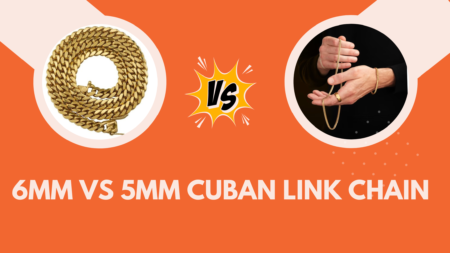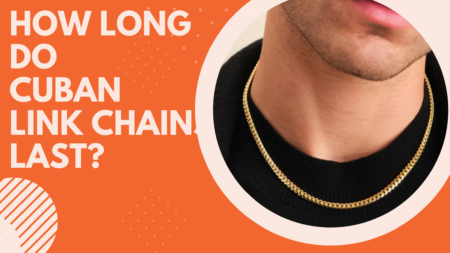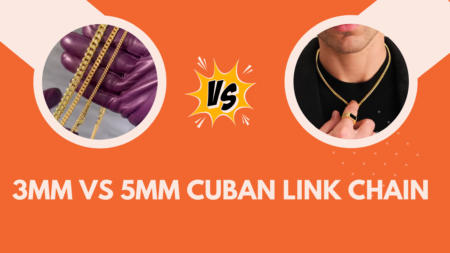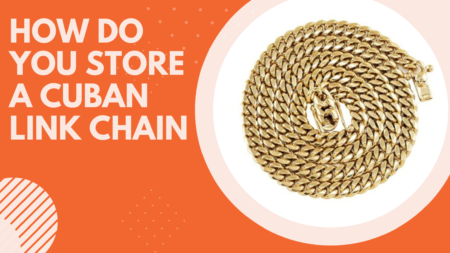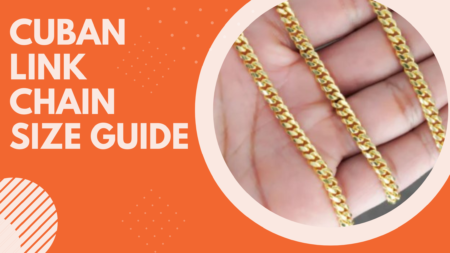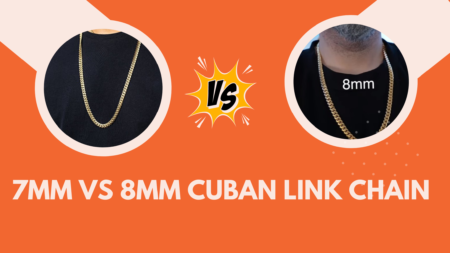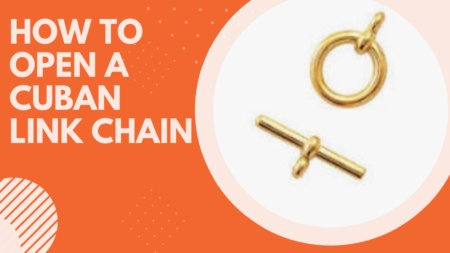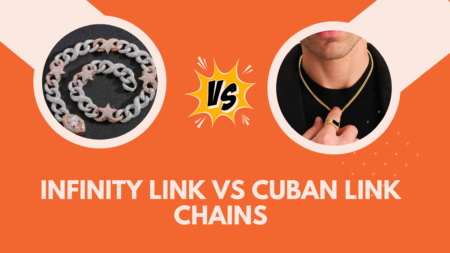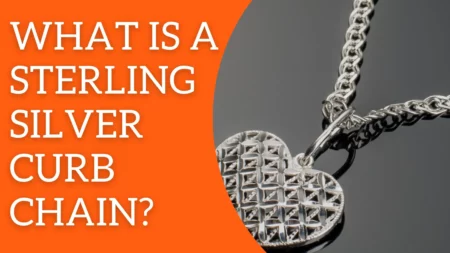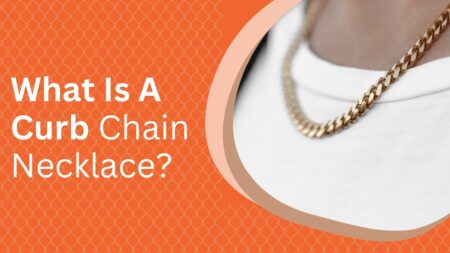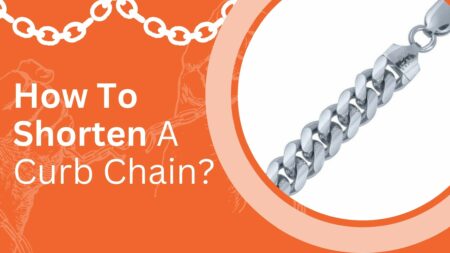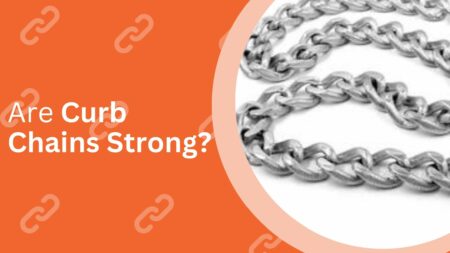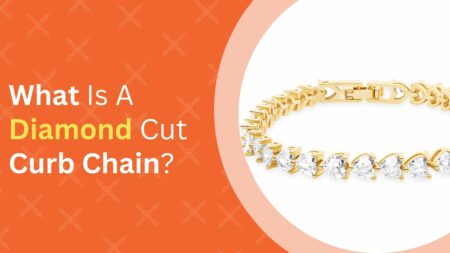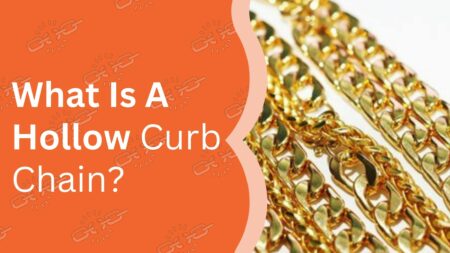Yes, you can certainly put a pendant on a curb chain, and in fact, this is a popular choice for many. The curb chain’s design, characterized by its interlocking, uniformly sized links, makes it an excellent choice for showcasing pendants. Here are some considerations to keep in mind when adding a pendant to a curb chain:
Adding a pendant to a curb chain is a great way to personalize your jewelry and make it more meaningful or stylish. Whether you opt for a classic look or something more modern and eclectic, a pendant can significantly enhance the appeal of a curb chain.
Charms are mostly worn on bracelets and anklets because of their size difference, while pendants are usually worn on necklaces.
A chain with a pendant is very suitable and can be worn with various dresses.
Keep the pendant’s size in mind when pairing a charm with a curb chain.
Small pendants should be able to fit comfortably on chains without causing them to weigh excessively.
Consider pairing a larger pendant with a thicker chain if you have a more oversized charm.
Types Of Pendants For Curb Chain Necklaces
There are six main types of pendants.
![Can You Put A Pendant On A Curb Chain? - [Explained] 1 Few Different Styles and types of pendants for curb link chains](https://outstylejewel.com/wp-content/uploads/2022/09/types-of-pendants-1024x576.webp)
Choosing the right pendant for a curb chain involves a blend of aesthetic preference, personal significance, and practical considerations. Here’s a guide to help you make the perfect choice:
![Can You Put A Pendant On A Curb Chain? - [Explained] 2 A person is thinking about that what he should consider before purchasing a pendant for his curb chain](https://outstylejewel.com/wp-content/uploads/2022/09/Things-to-Consider-Before-choosing-a-pendant-1024x576.webp)
1. Consider the Chain’s Thickness and Length
- Thickness: Heavier, thicker curb chains can support larger, more substantial pendants. Conversely, a delicate chain is best paired with a lightweight pendant to prevent strain on the chain.
- Length: The length of the chain will affect how the pendant sits on your body. For instance, a pendant on a longer chain tends to have more movement and can be more prominent.
2. Assess the Pendant’s Size and Weight
- Proportion: The pendant should be proportionate to the chain. A very large pendant on a thin chain might look unbalanced, and a tiny pendant might get lost on a thick chain.
- Weight: Ensure that the pendant is not too heavy for the chain, which can cause the chain to break or wear out faster.
3. Match the Style and Metal
- Style Consistency: The style of the pendant should complement the curb chain. A sleek, modern pendant pairs well with a similarly styled chain, while a vintage or ornate pendant might suit a more classic chain.
- Metal Type and Color: Ideally, the pendant and chain should be made of the same metal (e.g., gold, silver, stainless steel) to ensure they match and wear evenly over time.
4. Reflect Personal Taste and Meaning
- Personal Significance: Choose a pendant that holds personal value – be it a birthstone, initial, or a symbol representing something important in your life.
- Fashion Statement: If you’re more fashion-focused, consider current trends or choose a pendant that represents your unique style.
5. Consider the Occasion
- Everyday Wear vs. Special Occasions: A simple and sturdy pendant is ideal for everyday wear, whereas a more ornate or delicate pendant might be reserved for special events.
6. Think About Versatility
- Versatile Design: A pendant that can match different outfits and occasions will provide more value and wearability.
- Interchangeability: Consider if you want the ability to switch pendants on your chain for varied looks.
7. Check the Clasp and Bail
- Bail Size: Ensure the pendant’s bail (the loop that attaches to the chain) is large enough to fit through the chain.
- Clasp Security: The clasp of the pendant should be secure and easy to open/close.
8. Quality and Craftsmanship
- Durability: Look for well-made pendants that will withstand regular wear and tear.
- Craftsmanship: Pay attention to the details and finishing of the pendant. A well-crafted pendant can elevate the overall look of the chain.
9. Budget Considerations
- Determine your budget beforehand and look for the best quality and style within that range.
10. Try It On
- Comfort and Look: If possible, try on the pendant with the chain to check for comfort, how it hangs, and whether it meets your expectations in terms of appearance and scale.
Remember, the right pendant can transform a simple curb chain into a personal statement piece. Take your time to explore different options and select a pendant that resonates with your style and the story you wish to tell.
Which Necklace Chain Is Best For Pendants?
Choosing the best necklace chain for pendants involves considering the style, weight, and design of both the pendant and the chain. Here are some popular types of necklace chains that are well-suited for wearing with pendants:
1. Box Chain
- Structure: Made of square links, it resembles a box, hence the name.
- Durability: Strong and durable, can hold heavier pendants.
- Versatility: Suitable for both casual and formal wear.
2. Cable Chain
- Design: Consists of uniformly sized round or oval links.
- Flexibility: Simple and elegant, works well with a wide range of pendants.
- Popularity: One of the most traditional and popular choices for pendants.
3. Curb Chain
- Style: Links interlock with each other when laid flat.
- Variability: Comes in various widths, suitable for both small and large pendants.
- Unisex Appeal: Popular among both men and women.
4. Figaro Chain
- Pattern: Alternates between a long link and several shorter links.
- Aesthetic: Has an ornamental look but still sturdy enough for most pendants.
- Cultural Significance: Originated in Italy, adding a touch of European flair.
5. Rope Chain
- Appearance: Twisted strands of chain spiraled together, resembling a rope.
- Strength: Very durable and can support heavier pendants.
- Visual Interest: Adds texture and intricate detail even when worn alone.
6. Snake Chain
- Look: Smooth, round, metal plates or bands with a slight curve.
- Characteristics: Has a flexible, sleek, and shiny appearance.
- Compatibility: Best for smaller, lightweight pendants due to its delicate structure.
7. Wheat Chain
- Design: Woven links that create a symmetrical, intricate pattern.
- Durability and Texture: Strong and texturally interesting, good for heavier pendants.
- Visual Appeal: More decorative than a basic cable or curb chain.
8. Bead/Ball Chain
- Structure: Small metal balls linked together at regular intervals.
- Suitability: Works well with casual or sporty pendants.
- Informal Style: Less formal, often used for dog tags or simple charms.
Choosing the Right Chain for Your Pendant
- Match the Pendant’s Weight: Ensure the chain can support the weight of the pendant without risk of breakage.
- Consider the Style: The chain should complement the pendant’s style (e.g., a delicate pendant on a fine chain).
- Metal Type and Color: Choose a chain with the same metal and color as the pendant for a cohesive look.
- Clasp Size and Type: Ensure the chain’s clasp is secure and easy to use, and the pendant can easily slide onto the chain.
- Length and Comfort: Consider how the chain’s length will position the pendant on your body and ensure it’s comfortable for regular wear.
Each type of chain has its unique aesthetic and functional qualities. The best choice depends on your personal style, the specific pendant, and the occasions on which you plan to wear it.
3 Creative Ways To Wear Curb Chain With Pendant
Incorporating into Clothing
![Can You Put A Pendant On A Curb Chain? - [Explained] 3 Curb chains as a necklace with pendant](https://outstylejewel.com/wp-content/uploads/2022/09/Curb-chains-as-a-necklace-with-pendant-1024x576.webp)
- As a Belt: For longer curb chains, use them as a belt through the loops of your pants or around the waist of a dress. The pendant can hang off to the side, adding an unexpected and stylish element to your outfit.
- Attached to Clothing: Clip the chain onto the lapel of a jacket or the collar of a shirt, letting the pendant dangle for a decorative touch.
Back Necklace: If wearing an open-back dress or top, drape the curb chain so that the pendant hangs down your back. This is especially striking with backless or low-back outfits.
Layering with Different Chain Lengths and Styles
![Can You Put A Pendant On A Curb Chain? - [Explained] 4 Layer Multiple Curb Chains Of Different Lengths For A Dramatic Look](https://outstylejewel.com/wp-content/uploads/2022/09/Layer-Multiple-Curb-Chains-Of-Different-Lengths-For-A-Dramatic-Look-1024x576.webp)
- Mix and Match: Combine your curb chain with a pendant with other chains of varying lengths. For instance, you can layer a choker-length curb chain with a longer chain that has a statement pendant.
- Texture Play: Mix different textures and styles. Pair a sleek curb chain with a more intricate or beaded chain for a dynamic look.
Graduated Effect: Arrange the chains so that each one sits at a different length, creating a graduated effect that draws the eye. Place the most impactful pendant on the longest chain to make it a focal point.
As a Wrap Bracelet
![Can You Put A Pendant On A Curb Chain? - [Explained] 5 Curb Chain around the wrist](https://outstylejewel.com/wp-content/uploads/2022/09/Curb-Chain-around-the-wrist-1024x576.webp)
- Multi-Purpose Jewelry: Wrap the curb chain around your wrist multiple times to wear it as a bracelet. The pendant can serve as a charm, adding a unique touch to the bracelet.
- Stack with Other Bracelets: Combine this wrap bracelet with other bracelets or bangles for an eclectic, bohemian look.
Adjustable Style: Depending on the length of the chain, you can adjust how tightly or loosely it wraps around your wrist, offering versatility in styling.
How To Layer Curb Chain Necklaces?
Layering curb chain necklaces can create a stylish and personalized look. Here’s how to layer them effectively:
1. Vary the Lengths
- Graduated Effect: Choose chains of different lengths to create a cascading effect. This prevents the chains from tangling and ensures each one stands out.
- Start with a Choker: Begin with a shorter chain or choker, and then add longer chains progressively. Typical lengths might be 14 inches (choker), 16 inches, 18 inches, and so on.
2. Mix Widths and Styles
- Combine Different Weights: Pair a thin curb chain with a thicker one for contrast.
- Mix Textures: Along with standard curb chains, consider incorporating chains with different textures or link styles to add visual interest.
3. Add Pendants
- Different Pendants on Different Layers: Place pendants on one or more of the chains. Ensure the pendants vary in size or style to keep each layer distinct.
- Keep It Balanced: If using larger pendants, place them on the longest chain to maintain balance in the overall look.
4. Consider the Metals
- Same Metal, Different Finishes: You can use the same metal in different finishes (e.g., polished, matte) for a cohesive yet diverse appearance.
- Mix Metals Carefully: If you’re mixing metals (like silver and gold), do it intentionally. Keep one metal dominant and the other as an accent.
5. Play with Color
- Add Colored Chains: Introduce chains with colored elements, like enameled links or beads, to add a pop of color.
- Gemstones and Charms: Use chains with different gemstones or charms for added color and personal meaning.
6. Mind the Neckline
- Complement Your Outfit: Ensure the layered chains complement the neckline of your outfit. Open necklines like V-necks or scoop necks usually offer a great canvas for layering.
7. Adjustable Chains
- Use Extenders: If the chains are not adjustable, consider using extenders to achieve the desired lengths.
8. Check the Clasps
- Secure and Functional: Ensure all clasps are secure and easy to fasten, especially when layering multiple pieces.
9. Keep It Comfortable
- Weight and Comfort: Be mindful of the weight of the chains when layered. They should be comfortable to wear for extended periods.
10. Personal Style
- Reflect Your Style: The most important aspect of layering is that it should reflect your personal style. Don’t be afraid to experiment with different combinations until you find what works best for you.
Layering curb chains is all about creating a look that is uniquely yours. It’s a great way to express your personal style, so have fun with it and don’t be afraid to experiment!
![Can You Put A Pendant On A Curb Chain? - [Explained] 6 Curb Chain Necklace over the Collared shirts](https://outstylejewel.com/wp-content/uploads/2022/09/Curb-Chain-Necklace-over-the-Collared-shirts-1024x576.webp)
10 Benefits Of Wearing A Pendant On A Curb Chain
- Style Versatility: Complements both casual and formal attire.
- Fashion Timelessness: Offers a classic, enduring aesthetic.
- Personal Expression: Allows for individualized style and storytelling.
- Sentimental Value: Ideal for holding emotionally significant items.
- Durability: Curb chains are strong and long-lasting.
- Pendant Security: Sturdy links reduce the risk of losing pendants.
- Easy to Layer: Works well with other necklaces for a layered look.
- Unisex Appeal: Suitable for all genders.
- Statement Making: Can be a focal point of an outfit.
- Customizable: Pendants can be easily swapped for different looks.
- Symbolism and Identity: Pendants can symbolize beliefs, affiliations, or personal milestones.
- Comfort: Generally comfortable for daily wear.
- Accessibility: Available in a range of prices to suit different budgets.
- Gift Potential: Makes for a thoughtful and personalized gift.
- Elegance with Simplicity: Offers elegance without being overly extravagant.
Problems With Wearing Pendants On Curb Links
FAQs
What types of chain pendants are available?
Can you put a pendant on a 22-inch chain?
What type of chain is good for a pendant?
As a result of their high durability and timeless, minimalistic look, these necklaces can be worn with a wide variety of pendant styles.
